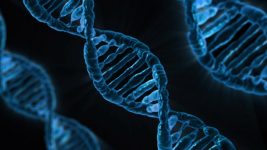Move Over DNA: Microbe Evidence May Be Coming

It may sound far-fetched, but could the microbes we all naturally carry around on our bodies be used to solve crimes?
A group of researchers is currently looking into whether microbes can link people to crime scenes.
What are microbes?
Microbes are tiny single cell organisms. There are more microbes on a person’s hand than there are people on the planet. They are vital to human and animal existence, and are found both inside and outside the human body.
As a person interacts with their environment, they add microbes to their own personal microbiome. At the same time, as a person touches objects or moves around an area, they also leave traces of their own microbes.
What the research says
Researchers are interested in tracing and identifying an individual’s interaction with objects and places through microbes.
One study on this has been completed, and further work is now being done on determining how microbial interactions change, and whether this could lead to tracking a person’s movements over time.
The recent study conducted by scientists in the USA, China and Brazil and published by the scientific journal Microbiome found that when testing multiple surfaces in a dwelling, “the microbial signatures of a family can be highly predictive of their family home and that individuals within the home can be differentiated.”
The study also went outside a home environment and studied two people’s movements between different rooms. Tests of the shoe’s microbes and the floor microbes were taken at hourly intervals, and the microbe communities were found to be similar.
“We believe this is likely due to the rapid contamination of the shoe sole by the floor microbial community,” the researchers said.
“We found that even moving from one’s own living room to a friend’s living room leads to a highly detectable shift in microbial community structure on an individual’s personal items.”
The study concluded that the microbe communities have a unique structure and composition based on the surface type, and the identity of the person interacting with them.
Microbes as evidence still a long way from the jury
However, while microbes and people can be linked, the researchers acknowledged that one of the potential problems with tracking a person’s movements over time was the fact that microbial communities undergo a rapid turnover.
The study took samples from the floor and shoe at the same time. This type of sampling would only give evidence that the shoe was at the location at the same time the microbe community sample was taken, rather than being able to determine whether a shoe which was at a location two hours prior could be linked to a sample taken of the floor two hours later.
According to the study, microbe communities change over time, and different factors can also influence these communities.
Outside factors such as other individuals passing through a location and the presence of air-conditioning vents and temperature changes can all affect the microbe communities within a given location.
There are also similar factors which can affect the microbe communities on an individual’s body and clothing. Walking through different environments, washing clothes or the body, and touching different surfaces in different environments will all influence an individual’s microbe communities.
So a simple process of scrubbing objects or hands with warm water and soap could reduce or change the microbe communities, which could have implications if microbes were to be used in evidence.
Who knows what the future holds?
So juries are unlikely to be hearing microbe evidence any time soon, research is continuing and the researchers have said they believe that microbes could eventually be used in criminal cases.
“We believe that the personalised nature of the human microbiome and the distinct community types associated with urban and built environments may play a significant role in future forensic investigations,” the researchers concluded.
And who knows? After all, DNA had sceptics when it was first introduced, and while it is acknowledged that DNA evidence certainly has its problems, and is open to contamination issues, it is still considered an important form of evidence.
Science comes with a lot of variables, and one thing is certain – criminal lawyers need to stay up-to-date with the changes and continually build on their knowledge and techniques to ensure that their clients get the best possible defence.





